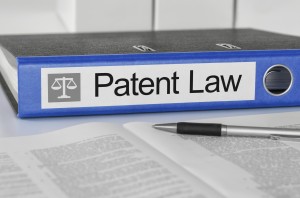 Back in April, I had the following observation after attending the Federal Circuit’s Judicial Conference: “[I]t is clear that the Federal Circuit continues to see that its role as the gatekeeper of all things patent has only been enhanced by the implementation of the America Invents Act (AIA) and the resultant flood of appeals arising from PTAB post-grant proceedings such as IPRs.” In other words, it was clear to myself and the other attendees privileged to hear from the judges of the Federal Circuit at that conference how seriously they took the job of policing the PTAB. Especially as PTAB appeals, particularly from IPR decisions, form an ever-larger component of the Federal Circuit’s docket.
Back in April, I had the following observation after attending the Federal Circuit’s Judicial Conference: “[I]t is clear that the Federal Circuit continues to see that its role as the gatekeeper of all things patent has only been enhanced by the implementation of the America Invents Act (AIA) and the resultant flood of appeals arising from PTAB post-grant proceedings such as IPRs.” In other words, it was clear to myself and the other attendees privileged to hear from the judges of the Federal Circuit at that conference how seriously they took the job of policing the PTAB. Especially as PTAB appeals, particularly from IPR decisions, form an ever-larger component of the Federal Circuit’s docket.
As time goes by, it becomes easier and easier to tease out the Federal Circuit’s actual approach to deciding PTAB appeals. At the same time, it becomes more and more important that PTAB practitioners develop the habit of checking Federal Circuit decisions daily, so as not to miss any important developments of interest to their client matters. Moreover, the very nature of PTAB appeals, particularly because of their focus on obviousness and other invalidity issues, has made the Federal Circuit’s handling of them important for patent litigators with District Court-heavy practices as well. As my April column also noted, “while an appeal of a district court decision can implicate issues such as damages and infringement, the main thrust of PTAB appeals centers on evaluation of technical references submitted by an IPR petitioner, and the PTAB’s subsequent application of invalidity principles in rendering its decision.” In short, the Federal Circuit’s view of invalidity principles is increasingly revealed to practitioners from its handling of PTAB appeals.
Unsurprisingly, there are certain cases where the Federal Circuit gets a chance to smack down the PTAB’s handling of a particular IPR. While the typical result in such a case is a remand back down to the PTAB in the hopes they get things right the second time around, there are sometimes hints in a certain Federal Circuit decision as to the appellate court’s views of how the PTAB is generally going about its business. While getting some of that commentary is unlikely in a case where the remand is because the Federal Circuit panel disagrees with the PTAB’s handling of the prior art references with respect to a particular patent, there are other times where the Federal Circuit’s take on the PTAB’s practices is a more likely element of a decision. Such as when the Federal Circuit panel finds procedural irregularities with the PTAB’s handling of a certain proceeding.

[E-BOOK] 5 AI Productivity Hacks To Save Time And Streamline Your Law Firm
Discover five practical ways to harness AI and eliminate busywork—so you can focus more on your clients and less on repetitive tasks.
One such situation just arose in a Federal Circuit decision involving a prolific patent assertion entity, SIPCO, which has been embroiled in a series of patent proceedings (in both the District Courts and the PTAB) with Emerson Electric. (This has gon on since 2013, which means that their patent saga has run as long as Orange is the New Black.) On August 29, 2018, the Federal Circuit decided an appeal from an IPR filed by Emerson against SIPCO’s ‘732 patent in 2015, where the PTAB had ultimately decided that Emerson’s obviousness challenge failed. The Federal Circuit disagreed. Awarding costs to the appellant — unusual in its own right — the Federal Circuit panel remanded the proceeding back to the PTAB. More interestingly, the Federal Circuit specifically addressed what it clearly thought was error on the part of the PTAB, in deciding that the asserted prior art was sufficient to invalidate a very similar SIPCO patent, but not enough to invalidate the ‘732 patent.
Accordingly, the Federal Circuit decision asked the PTAB on remand to “to address the seemingly opposite finding from the IPR2016-00984 Final Written Decision” involving the other SIPCO patent. Over the course of its decision, the Federal Circuit also asked how the PTAB panel could have come “to opposite conclusions on patentability of these nearly identical claims despite considering nearly identical evidence in both cases.” Unmentioned, but of interest, is that the same PTAB panel considered both IPRs in question. Even if that were not true, however, it is clear that the Federal Circuit harbors little tolerance for the PTAB issuing contradictory decisions, even with respect to specific patents as opposed to broader legal issues. While SIPCO may have initially benefited from the PTAB’s treatment of its ‘732 patent, the decision upholding the validity of that patent couldn’t pass muster with the Federal Circuit.
Both patent owners and challengers benefit in the long run from a Federal Circuit actively engaged in policing the PTAB. Especially where there are PTAB errors that undermine the belief of PTAB litigants that they will get a fair hearing, in front of a tribunal that is committed to consistent application of legal principles and reasoning. Perhaps nothing is as frustrating to two combatants that being put in a ring with an inconsistent referee, who allows some low blows while cracking down on others in a haphazard fashion. Neither SIPCO or Emerson could be blamed for feeling that that the PTAB has dealt with their disputes inconsistently. One consequence of the uncertainty engendered by such treatment is that settlement can become more difficult — with both sides thinking that they have garnered an incremental advantage based on a particular PTAB decision that has not reached Federal Circuit review yet.
Ultimately, we can be sure of one thing, at least when it comes to the Federal Circuit. It will demand that the PTAB do its best to avoid inconsistent results. Because inconsistent handling of the same or similar patents can be the death knell for public faith in the PTAB’s ability to carry out its mission. Thankfully, the Federal Circuit is there to provide the review necessary to ensure that inconsistent results don’t hold. If that is not effective policing, then it is hard to know what is.

The Law Firm’s Guide To Trust Accounting And Three-Way Reconciliation
Proper trust accounting and three-way reconciliation are essential for protecting client funds and avoiding serious compliance risks. In this guide, we break down these critical processes and show how legal-specific software can help your firm stay accurate, efficient, and audit-ready.
Please feel free to send comments or questions to me at [email protected] or via Twitter: @gkroub. Any topic suggestions or thoughts are most welcome.
Gaston Kroub lives in Brooklyn and is a founding partner of Kroub, Silbersher & Kolmykov PLLC, an intellectual property litigation boutique, and Markman Advisors LLC, a leading consultancy on patent issues for the investment community. Gaston’s practice focuses on intellectual property litigation and related counseling, with a strong focus on patent matters. You can reach him at [email protected] or follow him on Twitter: @gkroub.